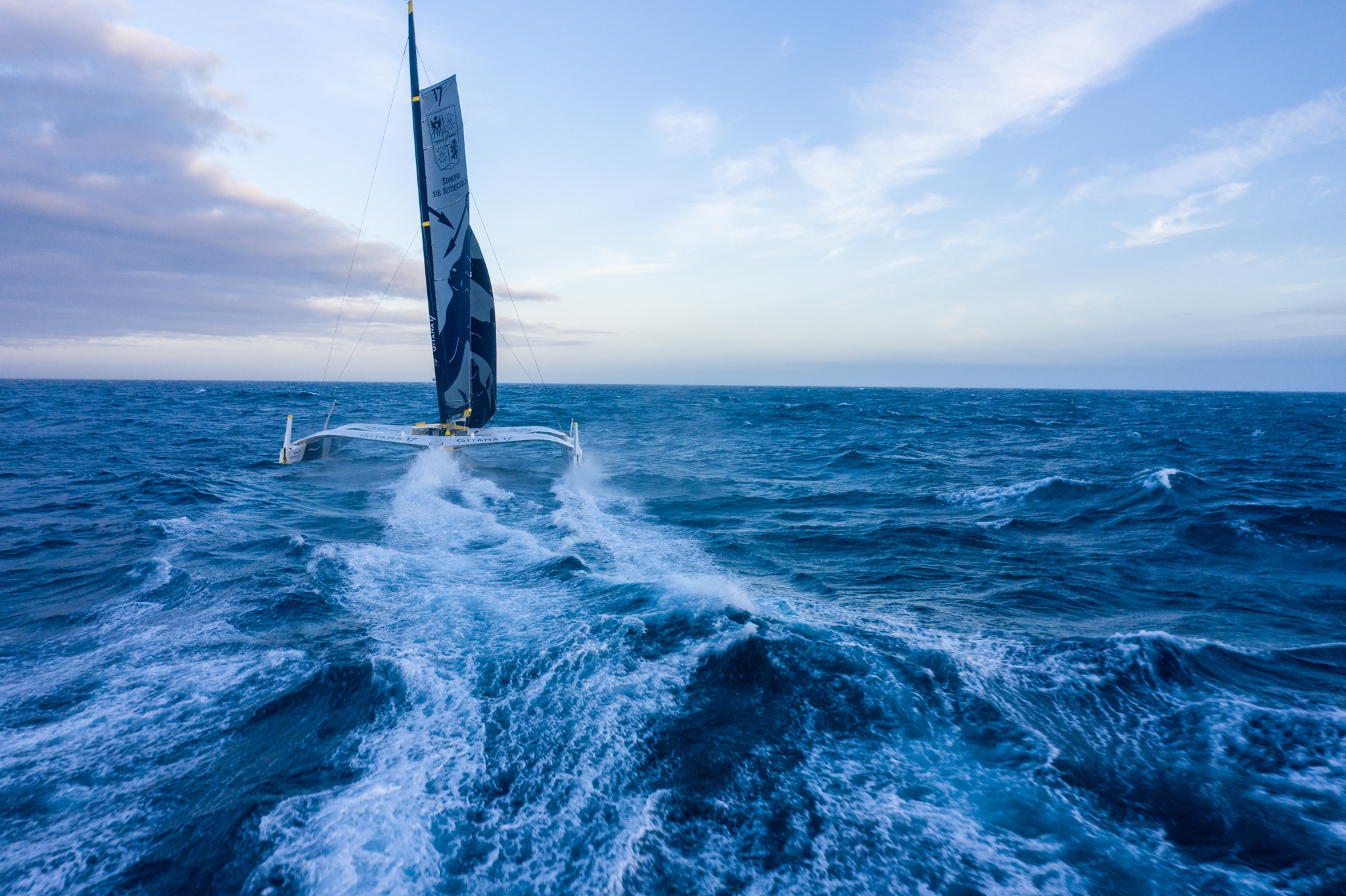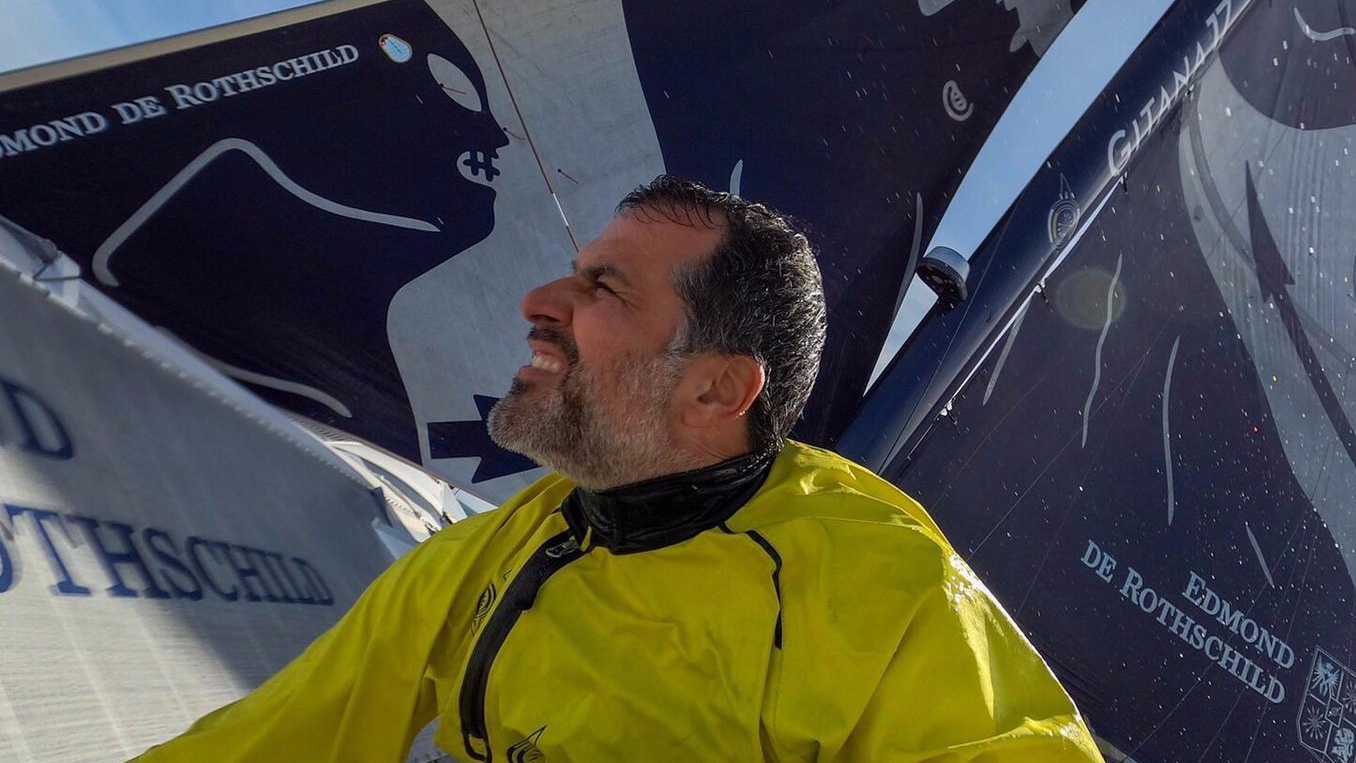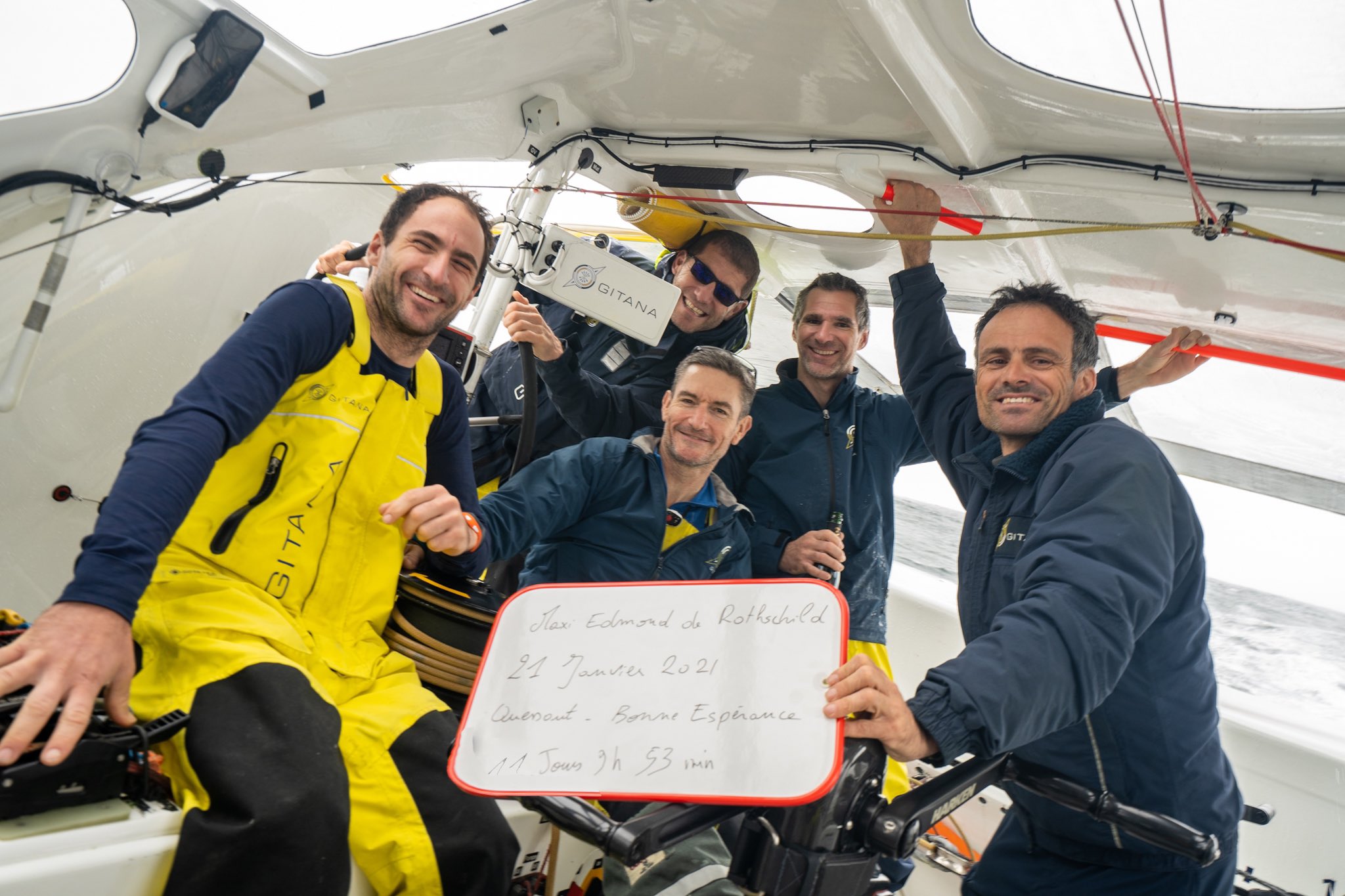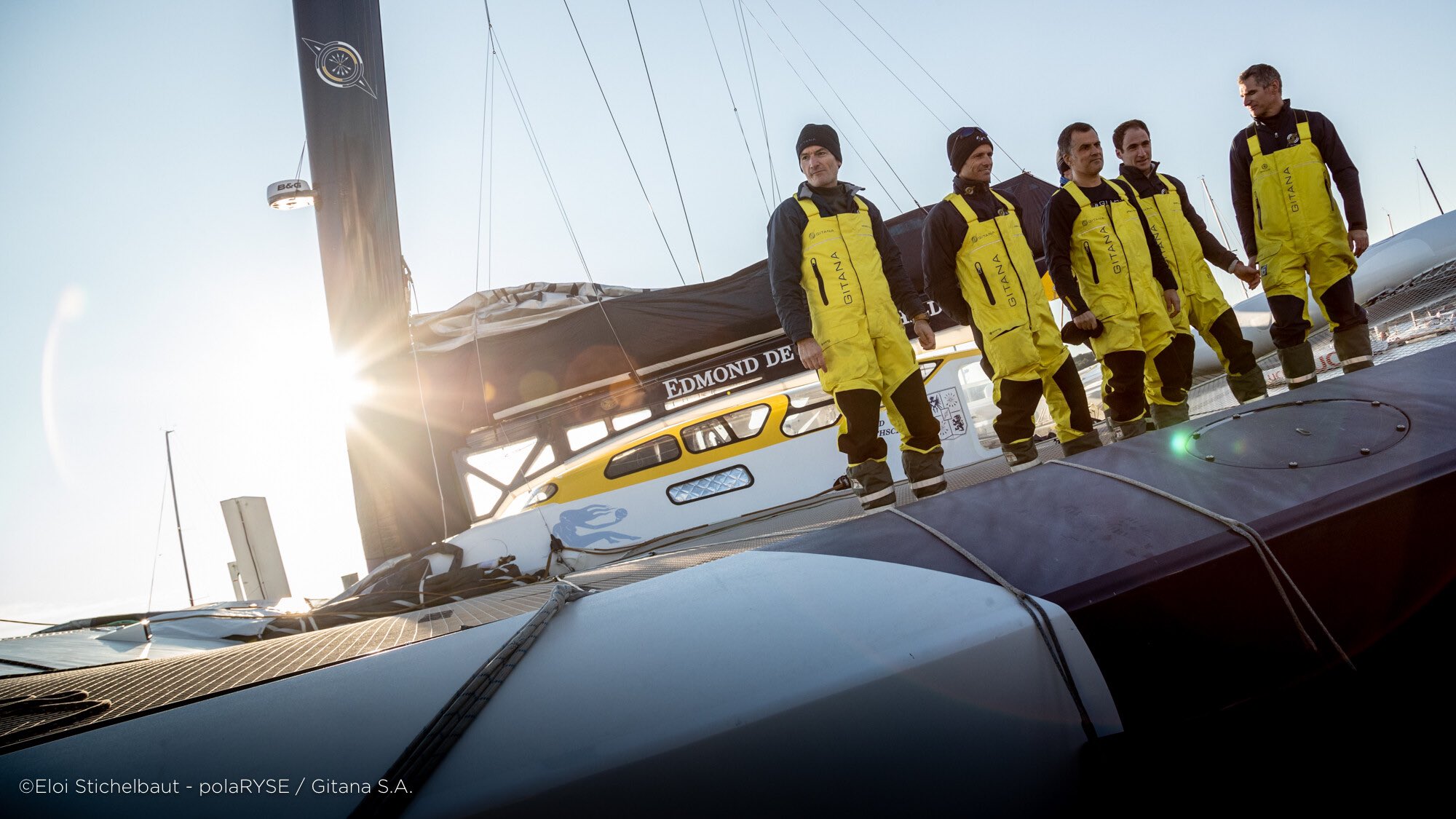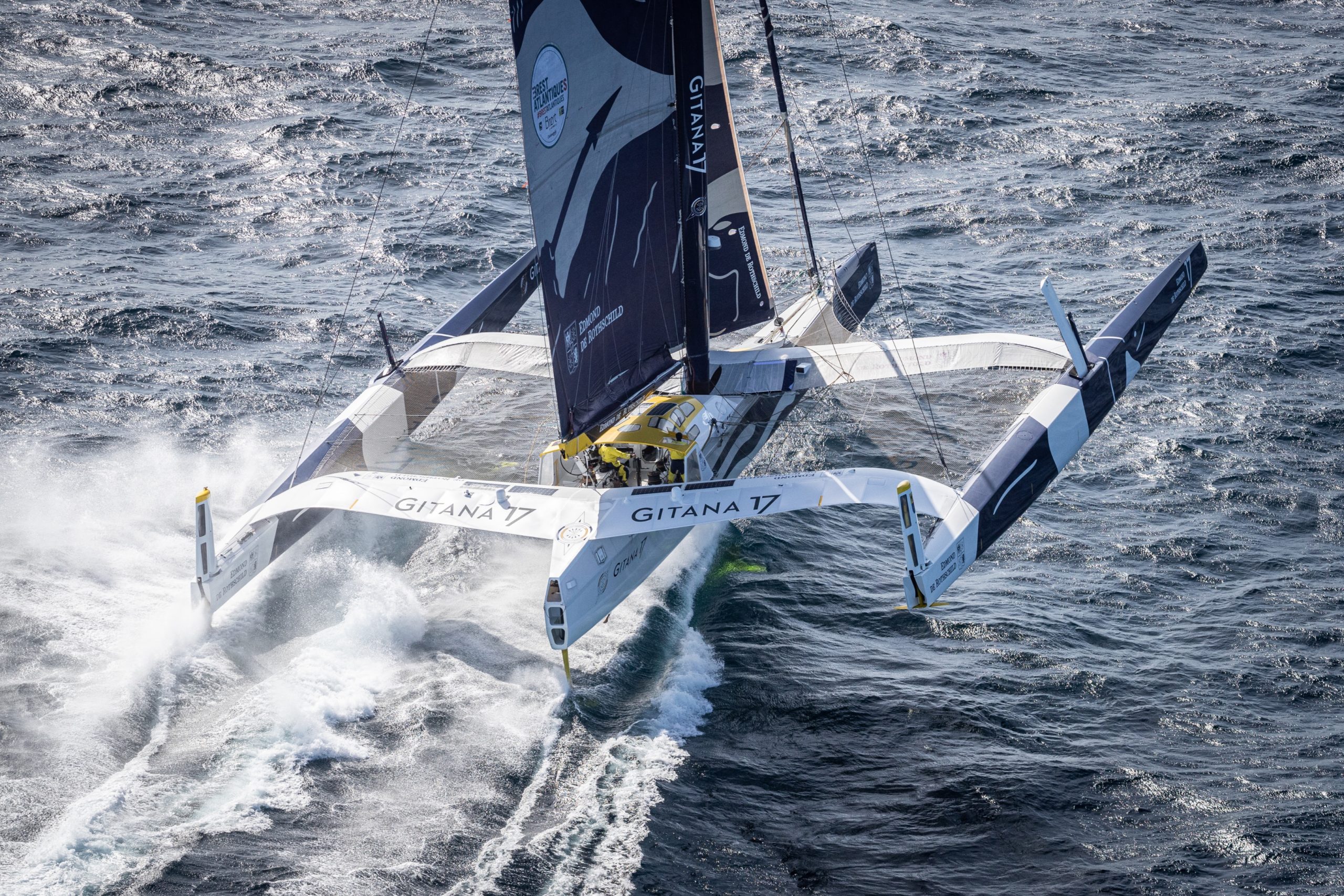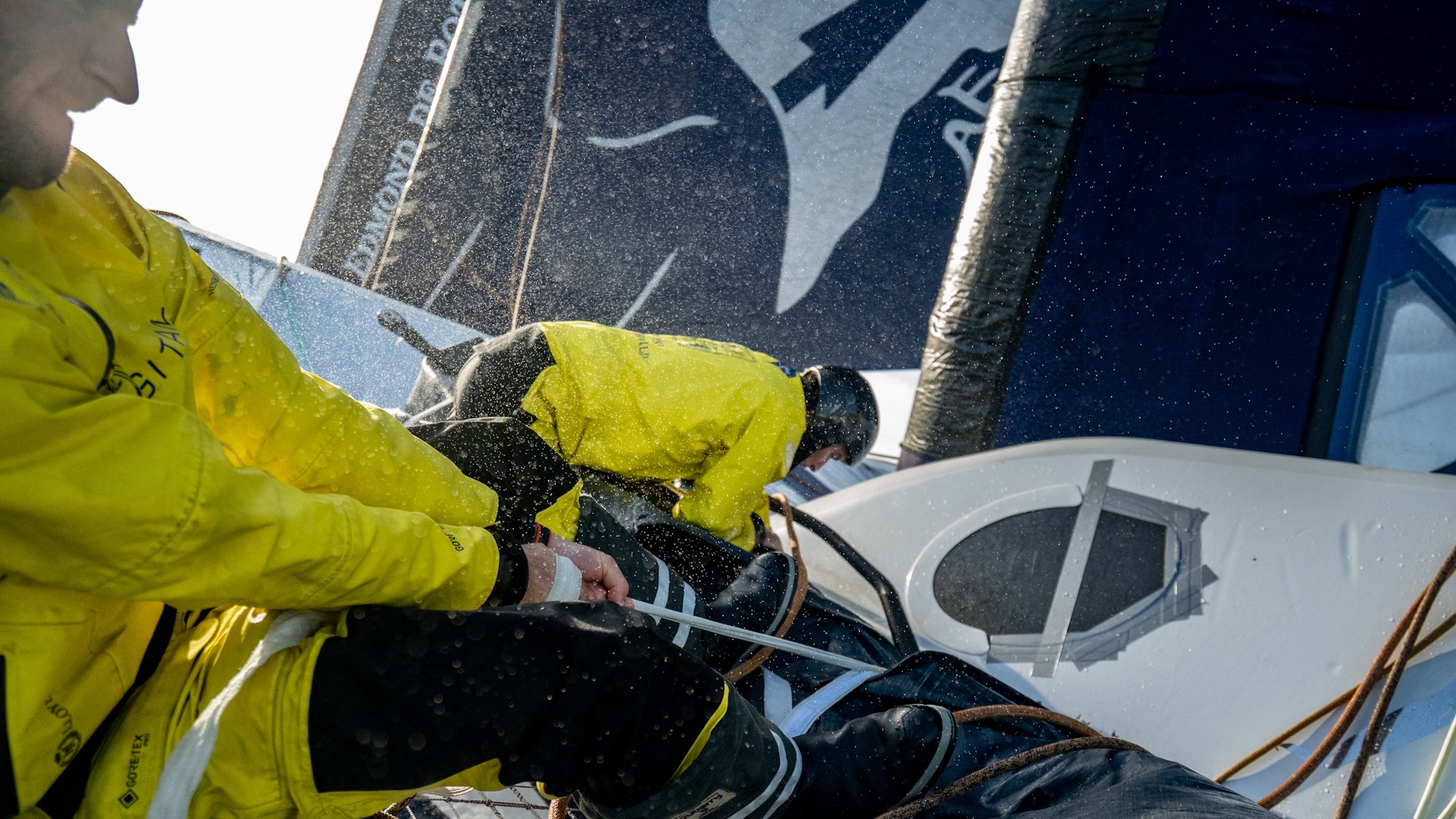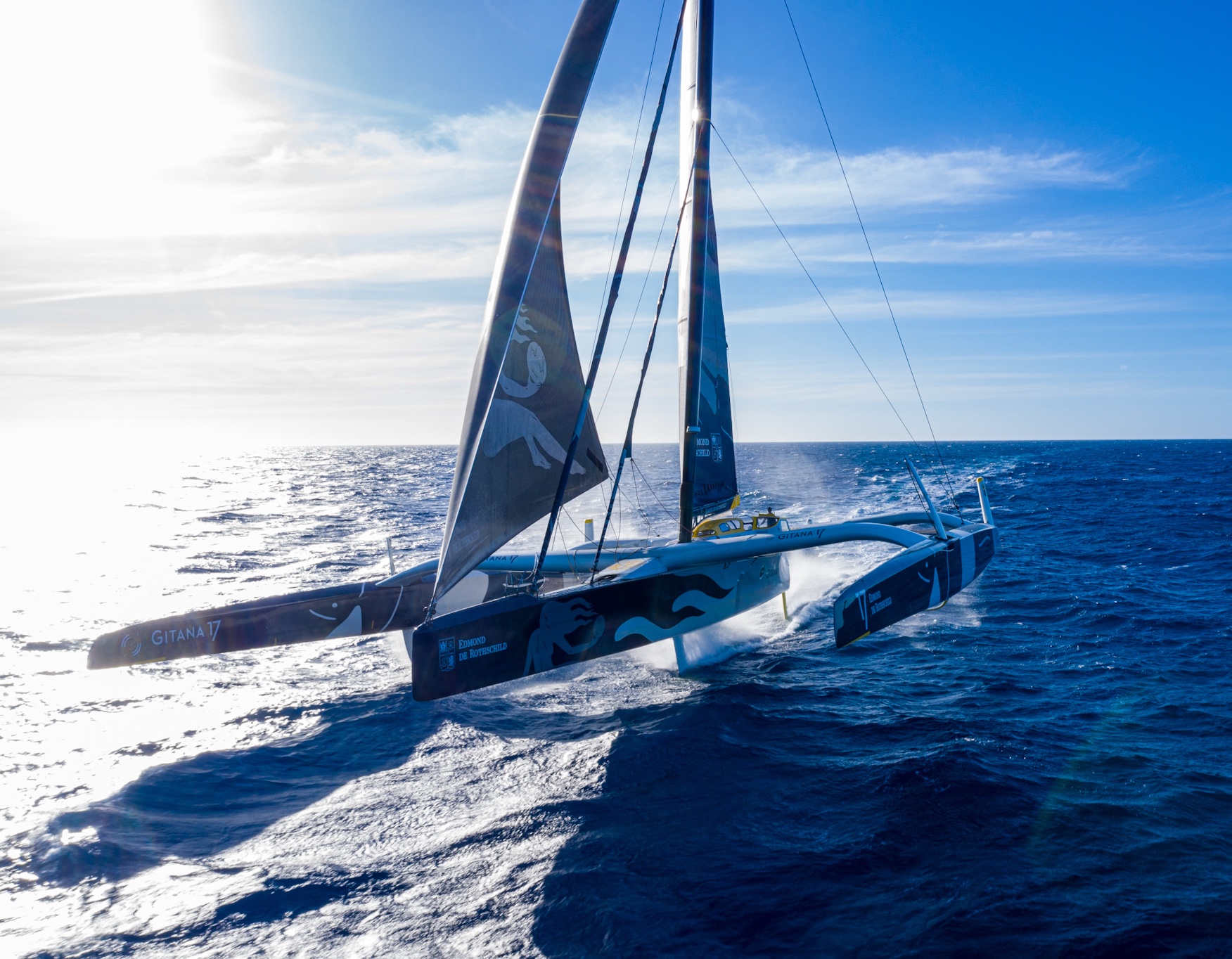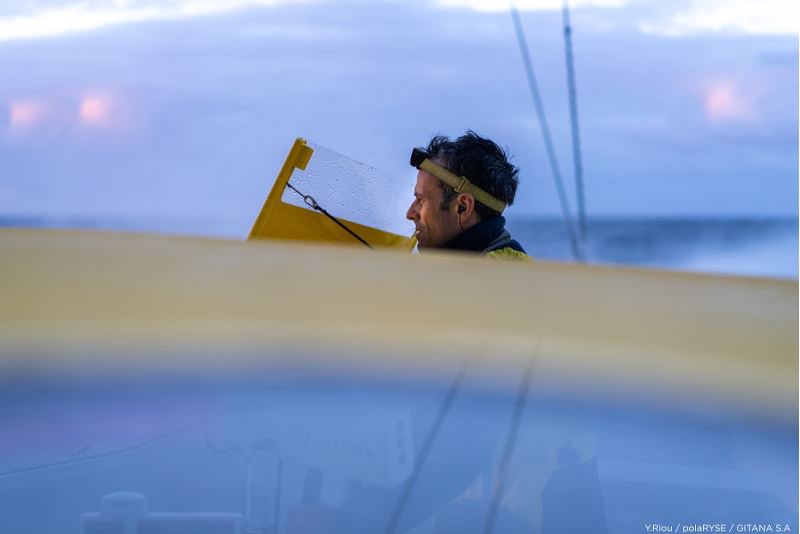The men of the Maxi Edmond de Rothschild are preparing to leave the familiar waters of the Atlantic Ocean and devour those of the less hospitable Indian Ocean. Indeed, at midday tomorrow, Franck Cammas, Charles Caudrelier, David Boileau, Erwan Israël, Morgan Lagravière and Yann Riou should pass the longitude of Cape Agulhas, which marks the entrance to the Southern Ocean. If the men of Gitana Team maintain the same pace they’ve been setting for the past three days or so, they should manage to post a fine time by way of a conclusion for this section of the course, which measures nearly 6,200 miles (or around 10,000 km).
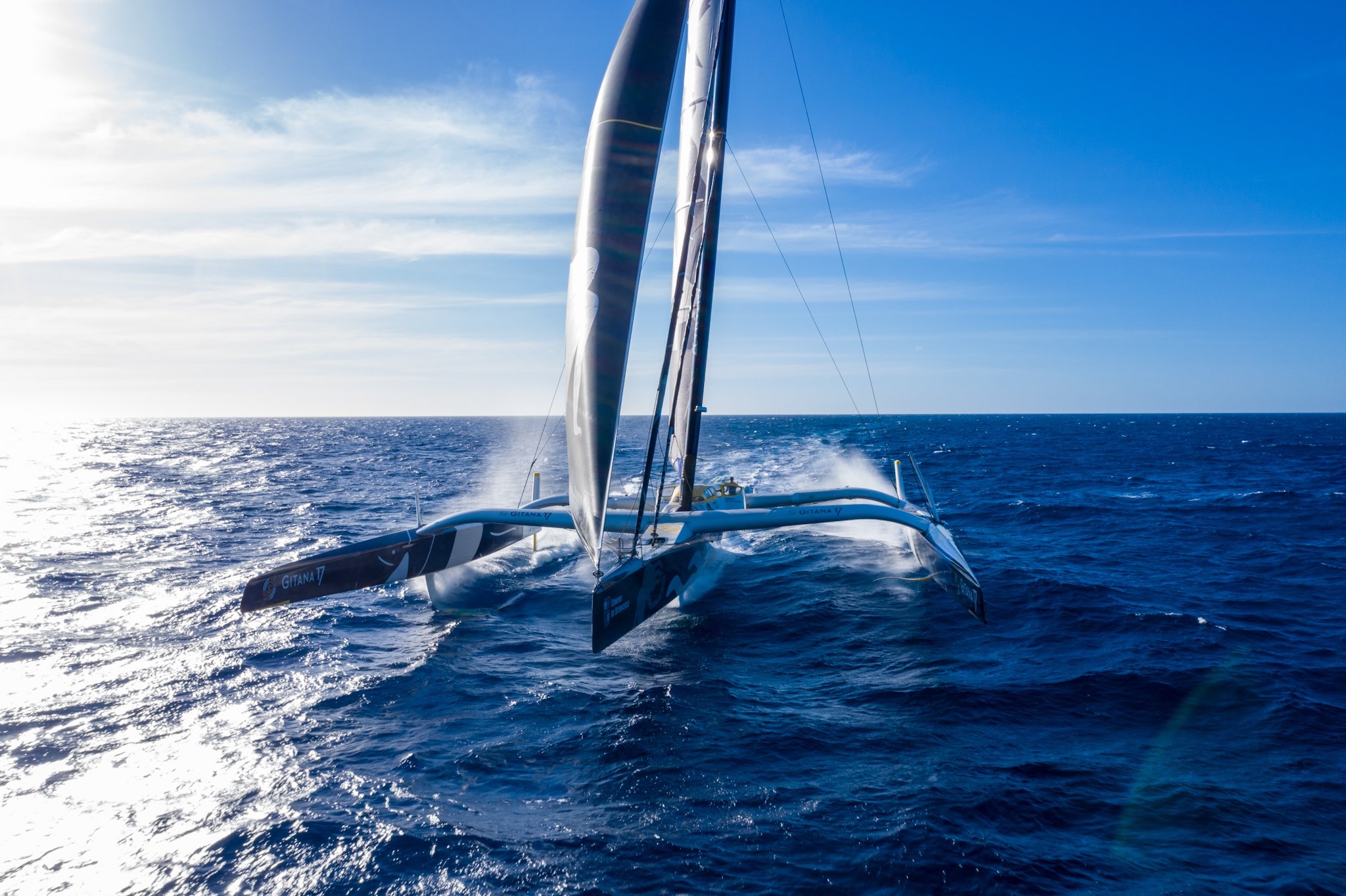
One should not always go by appearances… Despite an average speed of over 33 knots racked up by the flying maxi-trimaran over the past 24 hours, the six sailors who make up her crew are endeavouring to slow the giant down as best they can, but all she wants to do is accelerate. In a wind of between 30 and 35 knots, gusting to over 45 knots, which slaps into the sails, together with short, cross seas, now is not the time for excess speed. Rather it is all about striking a balance and preserving the gear. “We’ve been hunting for the brakes for the past few hours,” admitted Charles Caudrelier.
After ten and a half days at sea, the crew of the Maxi Edmond de Rothschild were benefiting from a nice lead of more than 950 miles over its virtual adversary at 15:00 UTC. However, a closer look at the chart reveals that it is in the next few hours that Francis Joyon and his men, the current holders of the Jules Verne Trophy, began their incredible straight-line ride towards the Pacific, a clear and implacable trajectory, which enabled them to secure a top-flight record in the Indian Ocean. Suffice to say that the match has only just begun.
Maxi-soundbites from the Sea, a Gitana Team podcast
Tuned into the noise, Yann Riou, trimmer and media crewman, aims the mike at the partners joining him in this extreme sailing synonymous with the Jules Verne Trophy. It’s a wonderful invitation to an audio journey sharing the extraordinary daily life of these six crewmen engaged in the quest for the speed record around the seas of the globe.
Season 1 of our podcast, devoted to the descent of the Atlantic, which makes up the first quarter of the planetary circuit in terms of time, rounds off with this 3rd episode. The men of the Maxi Edmond de Rothschild are at the gateway to the Deep South. Tomorrow, Thursday 21 January, with their passage across the longitude of Cape Agulhas at the tip of South Africa, the six sailors and their flying maxi-trimaran will switch over to the Indian Ocean.
Just a few hours before what is a grand debut for David Boileau, boat captain and crewman, the latter shares with us a snapshot of life in the roaring forties. In heavy seas, where the 32-metre giant surfs off waves or stumbles into those rising up ahead of her bows, the simple day-to-day actions require the utmost focus. Indeed, in a carbon machine constantly powered up at over 30 knots and primarily geared towards performance rather than comfort under sail, tumbling over, falling flat on your face or worse still injury, are never far away.
David Boileau, 20 January 2021, in the forties
“Right around us it’s magnificent! A blue sky, sunshine, reflections in the light blue sea… The seas are very heavy, with big breeze, and the boat is slipping along at 30-35 knots. It’s very pretty! Beyond the picture postcard though, it’s not always fantastically comfortable aboard. With the sea as it is, the boat has a tendency to come to an abrupt standstill in the waves. You have to hang on inside the Maxi, making sure you’re careful when you’re moving around the boat so as you don’t get caught out. This morning for example, I cut my finger near the galley, down in the central hull, just hanging on to make sure I didn’t fall. I got hooked up on a screw. Moreover, when we cook, to avoid getting ejected, we have a strap that we wrap around our waist. However, this morning, during my incident, I wasn’t in the galley, rather I was just passing into that area on my way out of my resting watch aft in the bunk area, which is located under the cockpit. In terms of sound, yes, it’s always very noisy. You hear the water slipping along the hulls or slamming against them, as well as the whistling appendages. However, this noise is a good reference and enables us to anticipate the motion of the boat quite well. With the vibration of the hull, you feel the acceleration and you imagine the inevitable follow-up deceleration. At that point, everyone hangs onto whatever they have to hand to cushion the blow when the boat lands back down! The boat has also been under a lot of strain for the past three days. We’re being very attentive and doing what needs to be done in terms of speed to preserve the gear as much as possible.”
